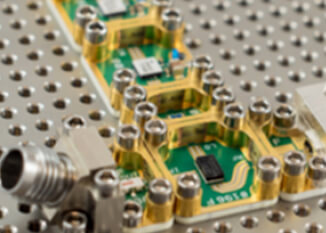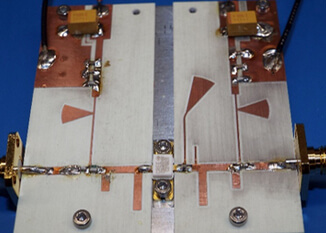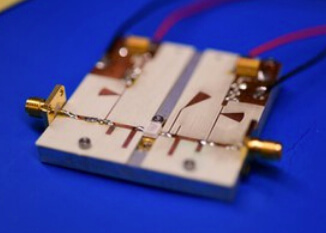Teaching & Outreach
Active Microwave Circuits for Wireless Applications (EE 87031)

In the era of software defined radios many people have access to the radio spectrum, and may even have an appreciation for the block diagram, but most do not understand the underlying technology. This course begins with a system perspective on radio design, considering overall performance metrics at the block diagram level. We then prototype a radio using pre-fabricated X-Microwave system blocks (pictured at left) which are sort of like Lego-blocks for RF and microwave designs. This allows students to rapidly prototype a working high performance radio, measure the performance of individual components, and then predict and validate the overall system performance.
Throughout the semester we will study and design the various components in the radio including amplifiers, mixers, and oscillators. Students will learn to characterize their own components and then replace the various X-Microwave blocks with their own circuitry to see how specific circuit-design decisions effect overall system performance.

At the conclusion of the course, students will:
- Develop a thorough understanding of active microwave circuit design beginning with system considerations which motivate circuit topology, transistor selection, bias, etc.
- Predict overall system performance based on individual component performance.
- Design with industry standard microwave design software.
- Characterize circuits and systems with industry standard microwave instruments including network analyzers, spectrum analyzers, and power meters.
Microwave Power Amplifier Design and Fabrication

This course discusses the in-depth design of microwave power amplifiers that address the ever-present need for high output power, linearity and efficiency. Upon course completion students are able to make system design decisions (e.g., class of operation, topology, technology—Si, GaAs, GaN) based on performance objectives, realize detailed designs using industry standard CAD tools, perform electromagnetic simulations, fabrication, as well as linear and non-linear measurements of various microwave power amplifiers.
Antenna Theory and Design (EE 67056, offered Fall semester, even years)
A first course in antenna theory and design based upon the classic text by Balanis. The course covers basic theory and wire antennas, arrays and synthesis, as well as aperture antennas and near-field far-field transform theory. We also cover numerical simulation and antenna measurement in a near-field antenna range.
Wireless Communications in the Presence of Interference (pilot course Spring 2020)
This course is being co-developed with Professors Laneman and Hochwald in the EE department. With funding from the ONR STEM office of research we are redeveloping a classical wireless communications course to consider the effect of interference. The course includes a lab where students develop a radio from the ground up to understand how the various components effect performance when interference is present.